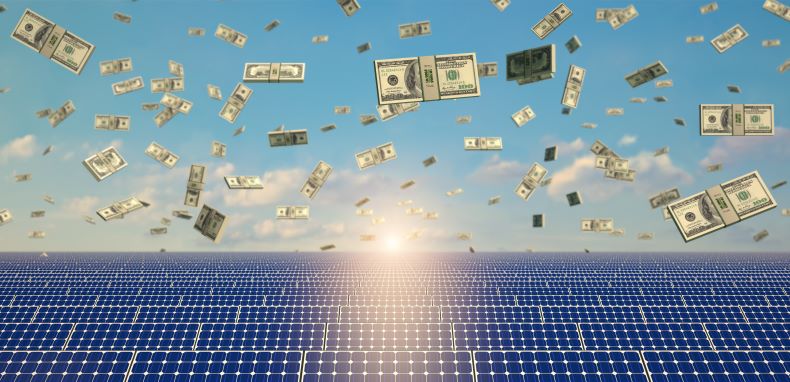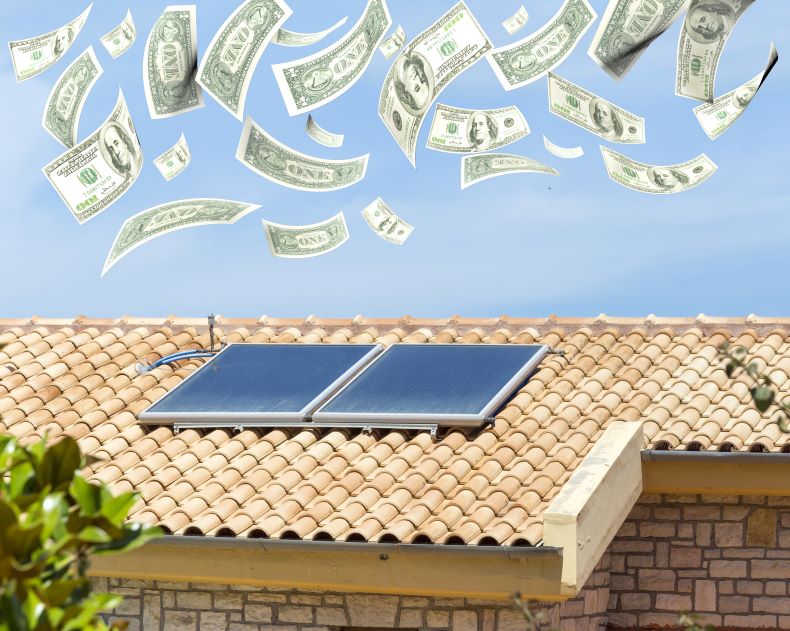When it comes to investing in a solar-powered system, most investors are going to want to know what their return-of-investment is going to be. In short, the amount of money that you’re going to save when you invest in solar energy is going to vary depending on a few factors including, where you live, the solar incentives that are available in your state and the kind of solar-powered system that you install.
If you want to calculate the ROI you can expect from solar panels, you are going to need to get a customized quote for your specific solar panel installation. Regardless of what the individual circumstances are, the savings that a solar-powered system provides over its lifetime are significant.
Let’s say that you install a 5-kilowatt solar-powered system in Oregon, it could result in a lifetime savings of $38,000, and in California, it can result in more than $70,000. While sure the numbers are quite different, they still represent a remarkable return of investments of solar panels.

Start-Up Cost of Solar
When you get a solar panel installation the cost of solar can vary from between $18,000 and $25,000 for a 5kW solar-powered system. This is going to cover the supply and solar panel installation of the basic components of a solar-powered system, which are:
- The solar panels, that will capture the sun’s energy and convert it into solar energy.
- The solar power batteries, that will store the solar energy for later use.
- The solar power inverter, which will convert the stored solar energy to the voltage that you are going to need to operate the electrical equipment.
If you want to get a more accurate idea of what the start-up cost of solar for our home, you can use our price checker tool.
What Solar Incentives Help Reduce the Cost of Solar
Switching to solar power can have a lot of benefits for homeowners (including solar energy tax benefits), but it can be quite expensive to first secure a solar panel installation. However, a lot of state governments are choosing to remain committed to solar panels and other sources of renewable energy, which has resulted in more solar incentives to help homeowners pay for solar panels.
Here are some solar incentives the are available:
The Federal Solar Investment Tax Credit (ITC)
The ITC has been in operation since 2006 and has funded quite a few solar panel installations. This is a solar incentive that allows homeowners to deduct 30% of the cost of solar from the federal income tax. This solar energy tax benefit is going to add a rebate of $7,500 on a $25,000 solar panel installation from the IRS the following year. This full credit is only going to be in place until the end of 2019, and a partial credit until 2021, so if you know you want to get a solar-powered system, don’t wait, act now!
State-Level Solar Incentives
The solar incentives include options that are going to vary between states, such as property tax credits, sales tax exemptions, and the government-issued cash rebates, all of which can result in the cost of solar being around $14,000 after the solar incentives are applied. Getting a solar panel installation at that price the lifetime savings in the excess of $60,000.
But the solar incentives encouragement doesn’t end with the solar panel installation. Many states are offering additional solar incentives like net metering and solar renewable energy credits (SRECs), this is going to enable you to increase your solar panels ROI by earning the equivalent of cashback on the excess solar energy your solar-powered system is producing.
Federal Grant Programs
Programs like the FHA PowerSaver Grant program added solar incentives to install solar-powered systems. The pilot mortgage insurance and home improvement loan program is going to enable homeowners to borrow around $25,000 over 20 years. This loan for solar allows them to pay cash for their investment in solar panels, meaning that they will start reaping the savings benefits immediately instead of waiting for the solar-powered system is paid.
Because homeowners have to be able to show proof of ownership to qualify for solar energy tax benefits, this is going to be a very important component of solar ROI to purchase the solar-powered system outright.

Three Factors for a Great Solar Energy ROI
When it comes to calculating a good ROI calculation for the investment of a residential solar-powered system. To maximize your solar-powered system’s performance and return a good design and solar panel installation professional should look at much more than the footage of your home, and the orientation of your roof.
When it comes to big purchases, the best results are going to happen when you explore all contributing factors fully and then align your design, goals and financing options accordingly. Here are there factors that are contributing to the ROI of your solar panel installation:
Your Energy Consumption Habits
This is going to be the most important thing to consider because it is unique to you. The amount of electricity you use and when you use it is critical because the utility costs fluctuate throughout the whole day. It’s going to matter when you’re turning the AC up, drying clothes, or cooking a meal. These patterns are unique to you. It is going to be very important to know for however is doing the solar panel installation to fully review your billing history for you to design a solar-powered system that is going to work the best for your patterns through all four seasons. This is going to impact how many solar panels that you’re going to need to purchase, the price and ultimately your ROI.
Your Local Utility Provider
Solar panels are going to stop generating solar energy when the sun goes down. The battery systems can be used to store the excess solar power that is created during the day to use it at night. But it is typically it’s better for customers to simply offset purchased utility power during the day with solar power, and utilize grid power at night when the sun is down. Designing a solar-powered system to optimize the programs in your area is critical to optimizing your solar power ROI.
Your Roof Orientation
Regardless of the orientation, what happens to be the most important consideration is your roof, and any of the solar panels that are installed on it, they may not be shaded by structures, mountains, or large trees. While they are unobstructed the south-facing roof is going to capture the most mid-afternoon sun, which is best for utility plans, a west-facing orientation can also be beneficial at offsetting utility power during the high-demand on-peak hours later in the day. The best performing solar-powered system is designed to address when you’re at home and tend to use the most electricity. All of the variables are going to influence the configuration, and price of your solar-powered system.


Input your address to see if it is solar friendly and how much you can save with solar.
Great. Your address is perfect for solar. Solar incentive is still available. Select monthly utility cost and calculate the size of solar system you will need now.
| kw System size | years Payback period | Lifetime savings |
No money down, 100% finance is available.
|
|
Want a Good Return of Investment? Sign Up for a Solar Panel Installation Here! |
Comments